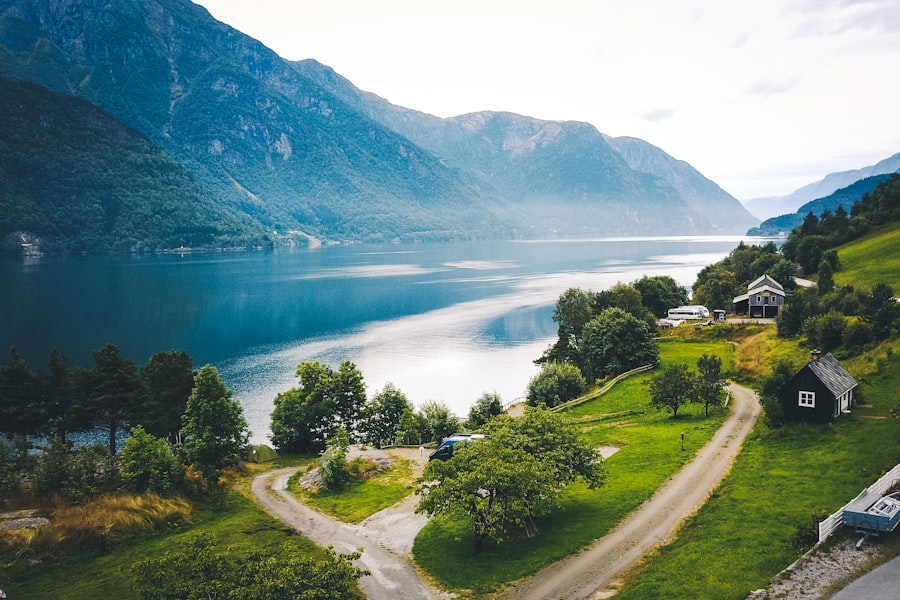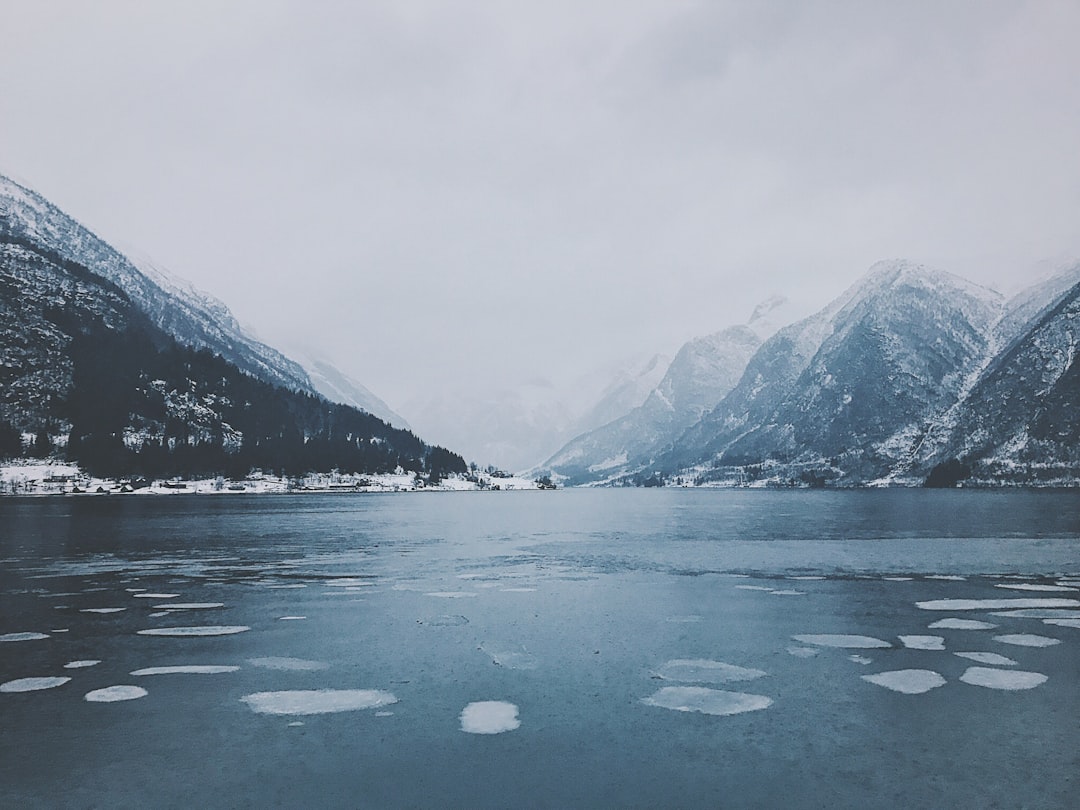As the winter months approach, many cyclists face the daunting task of ensuring their bikes remain in optimal condition despite the harsh weather conditions. Winter maintenance is not merely a recommendation; it is a necessity for anyone who wishes to continue riding throughout the colder months. The combination of rain, snow, and ice can wreak havoc on a bicycle, leading to rust, wear, and potential mechanical failures.
By taking the time to perform regular maintenance, cyclists can extend the lifespan of their bikes and ensure a safer riding experience. Moreover, winter maintenance is crucial for enhancing performance. A well-maintained bike will handle better on slippery surfaces, providing greater control and stability.
This is particularly important when navigating through icy patches or slushy roads. Cyclists who neglect winter maintenance may find themselves struggling with poor braking performance or slipping gears, which can lead to accidents. Therefore, investing time and effort into winterising your bike is not just about preservation; it is about ensuring safety and enjoyment during your rides. Book your 1-hour strategy session with Norway Relocation Group.
Summary
- Winter maintenance is crucial for keeping your bike in good condition and ensuring safety during the colder months.
- Regular cleaning and lubrication of your bike is essential to prevent rust and maintain smooth operation.
- Protect your bike from rust by using a rust-resistant coating and storing it in a dry place when not in use.
- Check and adjust your brakes regularly to ensure they are in good working condition and provide reliable stopping power.
- Inspect and inflate your tires frequently to maintain proper pressure and prevent punctures.
Cleaning and Lubricating Your Bike
One of the most fundamental aspects of winter maintenance is cleaning and lubricating your bike. The accumulation of dirt, grime, and road salt can significantly affect the performance of your bicycle. Regular cleaning helps to remove these contaminants, preventing them from causing long-term damage.
A simple wash with warm water and mild soap can do wonders for your bike’s frame and components. Pay special attention to areas where dirt tends to accumulate, such as the chain, gears, and brakes. After cleaning, lubrication is essential to keep moving parts functioning smoothly.
The chain, in particular, requires regular lubrication to prevent rust and ensure efficient gear shifting. Use a high-quality bike lubricant specifically designed for winter conditions, as it will provide better protection against moisture and cold temperatures. Applying lubricant to the derailleur and brake pivots will also enhance performance, making your bike feel more responsive during rides.
By committing to this routine, cyclists can maintain their bikes in peak condition throughout the winter months.
Protecting Your Bike from Rust

Rust is one of the most significant threats to bicycles during winter. The combination of moisture from rain or snow and road salt creates an environment conducive to rust formation. To combat this issue, it is vital to take proactive measures to protect your bike from corrosion.
One effective strategy is to apply a protective coating to metal components. Products such as anti-corrosion sprays or wax can create a barrier that prevents moisture from coming into contact with the metal surfaces. Additionally, storing your bike in a dry place can significantly reduce the risk of rust.
If possible, avoid leaving your bike outside for extended periods, especially during wet weather. If you must park your bike outdoors, consider using a waterproof cover to shield it from the elements. Regular inspections for any signs of rust are also essential; if you spot any corrosion, address it immediately by cleaning the affected area and applying a rust inhibitor.
By taking these precautions, cyclists can safeguard their bikes against one of winter’s most insidious threats.
Checking and Adjusting Your Brakes
Brakes are arguably the most critical safety feature on any bicycle, and their importance is magnified during winter riding conditions. Wet and icy roads can significantly affect braking performance, making it essential to check and adjust your brakes regularly. Start by inspecting the brake pads for wear; if they are worn down or unevenly shaped, they should be replaced promptly.
Properly functioning brake pads ensure that you can stop effectively even in slippery conditions. In addition to checking the pads, it is crucial to assess the brake cables and levers for any signs of fraying or damage. Adjusting the tension on the cables may also be necessary to ensure that your brakes engage smoothly and effectively.
A well-maintained braking system not only enhances safety but also boosts confidence while riding in challenging winter conditions. By dedicating time to this aspect of maintenance, cyclists can enjoy peace of mind knowing that they are equipped to handle whatever the winter roads may throw at them.
Inspecting and Inflating Your Tires
Tires are another vital component that requires careful attention during winter maintenance. The right tire pressure is crucial for optimal performance and safety on slippery surfaces. Under-inflated tires can lead to poor handling and increased risk of punctures, while over-inflated tires may reduce traction on wet roads.
Therefore, it is essential to check your tire pressure regularly using a reliable gauge and inflate them according to the manufacturer’s recommendations. In addition to pressure checks, inspecting your tires for wear and damage is equally important. Look for any cracks, cuts, or bald spots that could compromise their integrity.
If you notice any significant wear, consider replacing your tires with ones specifically designed for winter conditions; these often feature deeper treads for better grip on snow and ice. By ensuring that your tires are in excellent condition and properly inflated, you can enhance your bike’s performance and safety during winter rides.
Protecting Your Bike from Salt and Grit

Road salt and grit are common hazards during winter cycling, as they are often used to treat icy roads but can be detrimental to your bike’s components. Salt can accelerate rust formation on metal parts, while grit can cause wear on moving components such as chains and gears. To protect your bike from these elements, consider applying a protective coating or wax to vulnerable areas before winter sets in.
Additionally, regular cleaning becomes even more critical during this season. After each ride, take a moment to wipe down your bike and remove any salt or grit that may have accumulated. Pay special attention to the chain and drivetrain components; using a degreaser followed by lubrication will help keep them functioning smoothly despite exposure to harsh conditions.
By being proactive in protecting your bike from salt and grit, you can significantly extend its lifespan and maintain its performance throughout the winter months.
Storing Your Bike Properly
Proper storage is an often-overlooked aspect of winter maintenance that can have a significant impact on your bike’s longevity. Ideally, bikes should be stored indoors in a dry environment where they are protected from moisture and temperature fluctuations. If indoor storage isn’t an option, consider investing in a high-quality bike cover that offers waterproof protection against rain and snow.
When storing your bike for an extended period, it’s wise to elevate it off the ground using a bike stand or hook. This prevents flat spots from forming on the tires and keeps them away from potential moisture on the floor. Additionally, removing the battery from electric bikes or disconnecting any electronic components can help prevent damage from cold temperatures.
By taking these steps to store your bike properly during winter months, you can ensure that it remains in excellent condition when you’re ready to ride again.
Using Fenders and Mudguards
Fenders and mudguards are invaluable accessories for winter cycling that provide protection against water splashes and debris kicked up from the road. These components not only keep you cleaner but also help protect your bike’s components from moisture and grit that can lead to corrosion over time. Installing fenders can significantly enhance your comfort while riding in wet conditions by preventing water from soaking through your clothing.
When selecting fenders or mudguards, consider those specifically designed for winter use; they often feature wider coverage to accommodate larger tires commonly used in snowy conditions. Additionally, ensure that they are securely attached to prevent any rattling or movement while riding. By incorporating fenders into your winter cycling setup, you can enjoy a more pleasant ride while simultaneously safeguarding your bike against the elements.
Choosing the Right Clothing and Accessories
Winter cycling requires careful consideration of clothing and accessories to ensure comfort and safety during rides. Layering is key; wearing moisture-wicking base layers will help regulate body temperature while keeping sweat away from your skin. Insulating mid-layers provide warmth without bulkiness, while waterproof outer layers protect against wind and rain.
Accessories such as gloves, hats, and neck gaiters are equally important for maintaining warmth during colder rides. Investing in high-quality cycling gloves will allow for better grip on handlebars while keeping hands warm. Additionally, consider using thermal socks designed for cycling; these will help keep feet warm without compromising pedal efficiency.
By choosing appropriate clothing and accessories tailored for winter conditions, cyclists can enjoy their rides without succumbing to discomfort from the cold.
Regular Inspections and Tune-ups
Regular inspections and tune-ups are essential components of effective winter maintenance that cannot be overlooked. Setting aside time every few weeks to thoroughly check your bike will help identify any potential issues before they escalate into more significant problems. During these inspections, examine all components including brakes, gears, tires, and chains for signs of wear or damage.
In addition to self-inspections, scheduling professional tune-ups at least once during the winter season can provide an added layer of assurance regarding your bike’s performance. A professional mechanic will have the expertise needed to identify issues that may not be immediately apparent to an untrained eye. They can also perform necessary adjustments that ensure optimal performance throughout the colder months.
By committing to regular inspections and tune-ups, cyclists can ride with confidence knowing their bikes are well-maintained.
Seeking Professional Help when Needed
While many cyclists are capable of performing basic maintenance tasks themselves, there comes a time when seeking professional help is necessary. If you encounter issues beyond your expertise—such as complex mechanical problems or significant damage—consulting a professional mechanic is advisable. They possess the knowledge and tools required to diagnose issues accurately and perform repairs safely.
Additionally, if you find yourself overwhelmed by the prospect of winter maintenance or simply lack the time to dedicate to it, consider taking your bike to a local shop for a comprehensive service package tailored for winter riding conditions. Many shops offer seasonal maintenance plans that include cleaning, lubrication, brake adjustments, tire inspections, and more—all designed to prepare your bike for winter challenges effectively. By recognising when professional assistance is needed, cyclists can ensure their bikes remain in top condition throughout the season.
In conclusion, maintaining a bicycle during winter months requires diligence and attention to detail but pays off significantly in terms of performance and safety. From cleaning and lubricating components to protecting against rust and ensuring proper storage practices—each step plays a vital role in preserving your bike’s integrity through harsh weather conditions. For those looking to enhance their cycling experience further while learning Norwegian culture through language courses in Oslo, consider enrolling at NLS Norwegian Language School where you can immerse yourself in both language learning and cycling adventures amidst Norway’s stunning landscapes!
Speak Norwegian with confidence. Enroll in a class at the NLS Norwegian Language School now.

